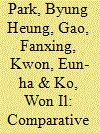| Srl | Item |
| 1 |
ID:
110366


|
|
|
|
|
| Publication |
2011.
|
| Summary/Abstract |
As a nation develops its nuclear strategies, it must consider various aspects of nuclear energy such as sustainability, environmental-friendliness, proliferation-resistance, economics, technologies, and so on. A nuclear fuel cycle study could give convincing answers to many questions in regard to technical aspects. However, one nuclear fuel cycle option cannot be superior in all aspects. Therefore a nation must identify its top priority and accordingly evaluate all the possible nuclear fuel cycle options. For such a purpose, this paper examined four different fuel cycle options that are likely to be plausible under situation of Republic of Korea: once-through cycle, DUPIC recycling, thermal recycling using MOX fuel in PWR (pressurized water reactor), and SFR (sodium cooled fast reactor) employing fuel recycling by a pyroprocess. The options have been quantitatively compared in terms of resource utilization and waste generation based on 1 TWh electricity production at a "steady-state" condition as a basic analysis. This investigation covered from the front-end of the fuel cycles to the final disposal and showed that the Pyro-SFR recycling appears to be the most competitive from these material quantitative aspects due to the reduction of the required uranium resources and the least amount of waste generation.
|
|
|
|
|
|
|
|
|
|
|
|
|
|
|
|
| 2 |
ID:
103885


|
|
|
|
|
| Publication |
2011.
|
| Summary/Abstract |
The present paper attempts to combine cointegration theory and the material flow analysis approach to examine the causal relationship between resource use and real GDP in Jiangsu Province in East China. The study considers the period from 1990 to 2007. We use direct material input as the proxy variable for resource use. Our estimation indicates that real GDP and resource use are cointegrated and there is only unidirectional long-run Granger causality running from resource use to real GDP, but not vice versa. The estimation results mean that resources are a limiting factor in terms of economic growth, and, therefore, strategies should be adopted for more vigorous economic development and consistent resource use in East China. Furthermore, the novel idea and methodology involved in the present study can be readily extended to cover other regions for the analysis of the relationship between resource use and economic growth.
|
|
|
|
|
|
|
|
|
|
|
|
|
|
|
|